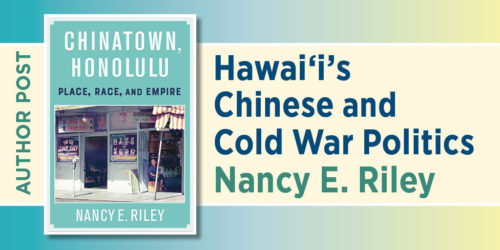A Q&A with Matthew Akester, translator of Memories of Life in Lhasa Under Chinese Rule
“The main gift of Khetsun’s book, however, is its vivid depiction of the banal horrors; how prisoners were forced to denude the hills around Lhasa to provide their captors with firewood, or carry them piggy-back across icy rivers in winter, or how prisoners’ lives were casually wasted in work accidents, how political campaigns crushed resistance cells inside prisons during the 1962 war, and so on.” – Matthew Akester
Today, we have a Q&A with Matthew Akester, the translator of Memories of Life in Lhasa Under Chinese Rule, Tibetan Tubten Khétsun’s autobiographical account of his time spent in Tibet after the Tibetan people’s uprising of March 10, 1959. In his answers below, Akester describes his history with the project and explains exactly why Khetsun’s book is so important.
Why Khetsun’s book?
It is widely recognised that published accounts of Tibet’s history under Chinese Communist occupation tend to be skewed by the dominant narratives promoted by the CCP and Tibet’s government in exile, both of which are by nature polemical and inadequate. Chinese language accounts are constrained by the ideological rigidity and censorship that prevails within the PRC, while Tibetan language accounts, at least of the period 1958-79, are limited to the memoirs of survivors. Those that have appeared in English have typically been ghost written by sympathetic collaborators seeking to promote the Tibetan cause (with just a few exceptions). As someone who works on modern history primarily from Tibetan language sources, I have tried to review as much of the memoir literature as I can, and that is how I came upon Khetsun’s book. It was first published in the rather drab format used by the exile government press in Dharmshala (1998), under the title ‘A testament of suffering’, suggesting another iteration of the maudlin lament in which exiled survivors of Maoism often frame their stories. Soon after opening the cover, however, I was drawn into an exceptionally detailed and evocative memoir, refreshingly free of self-pity and black-and-white hyperbole. Most of the accounts published by Khetsun’s generation are actually prison memoirs, since that is where the majority of educated Tibetan men spent the years 1959-79, but he was released early and thus in a position to describe the condition of civil society in Lhasa in those years. His language is clear and sympathetic, a pleasure to translate.
How representative is his account?
Khetsun’s family belonged to the minor nobility, and he was groomed to serve the Lhasa government, so he was by Chinese Communist norms a prima facie ‘class enemy’ and prime target of the ‘class struggle’ through which they sought to transform Tibetan society. The quotidien persecution and oppression he describes, however, will be familiar to Tibetans from all social classes and regions who lived through the Maoist era. Khetsun’s anecdotal assertion that two thirds of all adult males were incarcerated during and after the suppression of the 1959 uprising awaits conclusive corroboration, but he also reminds us that Tibetan society was divided into nine social classes by the Communist bureaucracy, of which only the bottom two or three were considered reliable supporters of the Party. This can be readily corroborated, but it raises a question that virtually no Tibetan account of the period has confronted frankly: who were the Tibetan footsoldiers of the occupation, and what motivated them to inflict ‘class struggle’ on their countrymen with such apparent readiness? Khetsun does not confront the question head-on, but offers some fascinating psychological sketches of individuals with conflicted loyalties.
What does it tell us that we did not already know?
Even seasoned and specialist readers will collect new information here. The Hui agitation of 1961, the abandoned proposal to establish the TAR capital in the more temperate climate of Powo in the south-east, the 1968 Tsuklakhang massacre, the mass executions of 1969-70, and the political campaigns of 1973 and ’74 have not been written about before, at least from an eyewitness viewpoint. The main gift of Khetsun’s book, however, is its vivid depiction of the banal horrors; how prisoners were forced to denude the hills around Lhasa to provide their captors with firewood, or carry them piggy-back across icy rivers in winter, or how prisoners’ lives were casually wasted in work accidents, how political campaigns crushed resistance cells inside prisons during the 1962 war, and so on. His images of soldiers destroying harvested swamp grass or hounding invalids from their beds in the middle of the night are in their own way as poignant as the headline images of the Cultural Revolution already known to many readers.
What relevance do these events have today?
In 2008 there were mass protests against Chinese rule all over Tibet, and especially in the hitherto untroubled northeastern region of Amdo. One of the main reasons for this was to commemorate the terrible events of 1958 in that region, a devastating trauma that affected the whole society, but which is still a taboo subject inside China, known only through the reminiscences of the survivors and clandestinely published accounts. The horrors of the Maoist era are still unfinished business, haunting the relationship between the Chinese state and its Tibetan subjects, and accurate, non-rhetorical testimony of what happened is of crucial importance in shaping future outcomes.
1 Response
Leave a Reply
You must be logged in to post a comment.





It’s a tremendous book, Akester’s comments say it all. Well worth reading, to understand what happened then and also why the unrest in 2008, mainly along the unacknowledged border between Chinese and Tibetan culture, never mind the administrative and political borders. It also indicates why today’s ongoing devastation of the environment is so dramatic